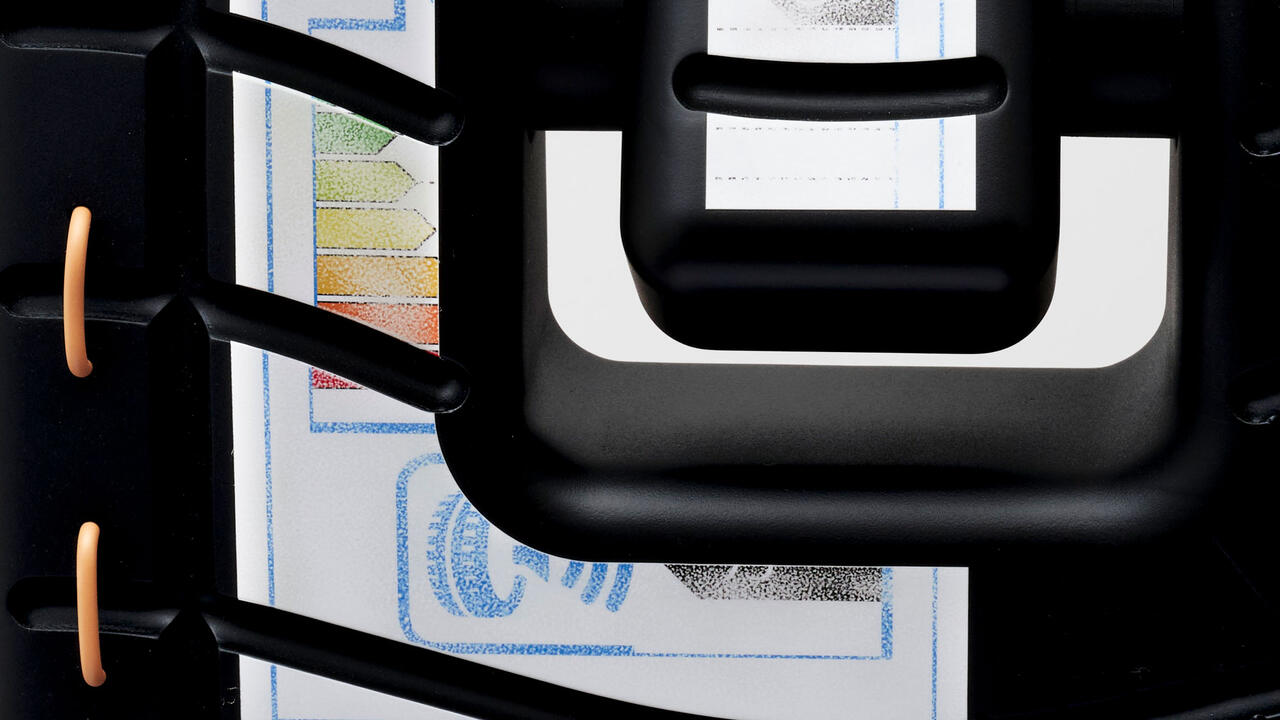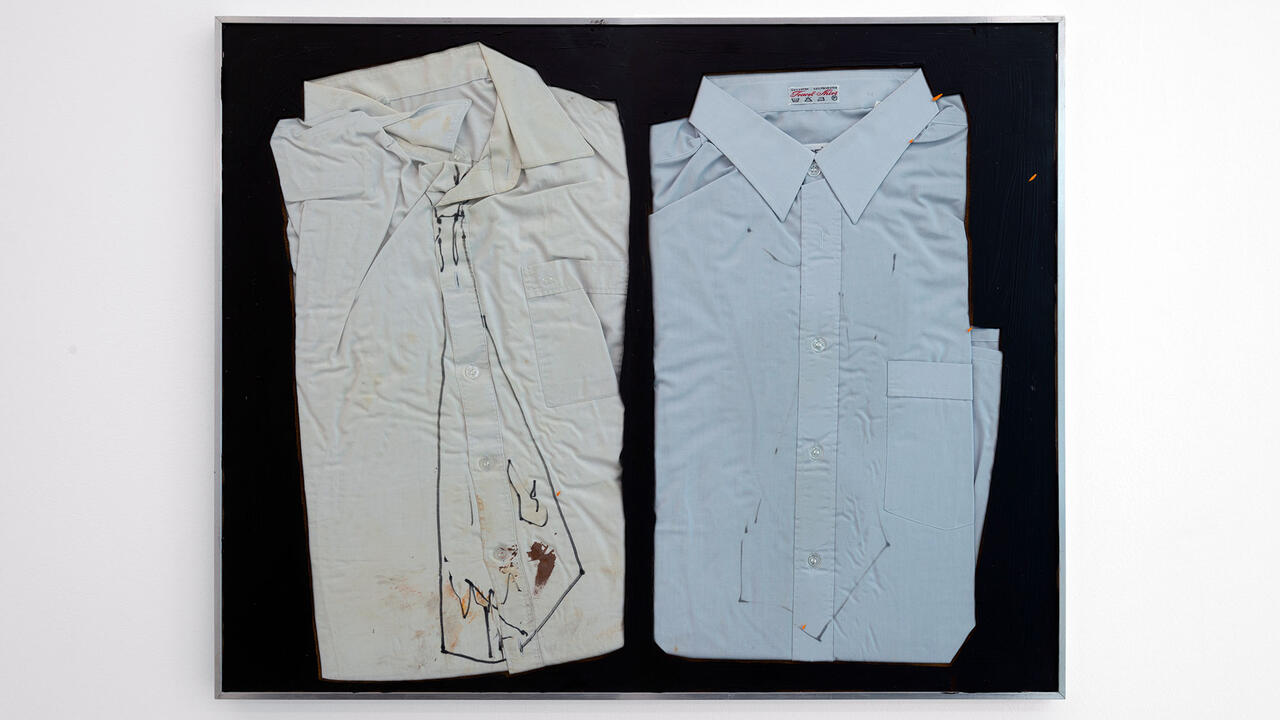Reference Material
Helen Mirra’s works in sound, fabric, film, photography, text and sculpture are rich with allusions and overlaps across a range of subjects
Helen Mirra’s works in sound, fabric, film, photography, text and sculpture are rich with allusions and overlaps across a range of subjects
Ascension is a tiny island in the South Atlantic, seemingly bereft of inhabitants. Like Diego Garcia, a small piece of the Chagos Archipelago in the Indian Ocean, it sits at a gigantic crossroads of electronic communications. Although neither the British nor the American government has confirmed these atolls’ respective espionage functions, the utterly remote isles are assumed to be surveillance nodes, perfectly poised to capture a range of signal intelligence passing invisibly over them.
Although perhaps a strange comparison, there is a similarly secretive remoteness to Helen Mirra’s works that initially belies the rich range of sources and references that her pieces pull out of the air around them. Using sound, fabric, film, photography, text and sculpture, her works tend to sit in the middle of an asterisk of allusions, deftly placed at the apparent single point of overlap between disparate subject matters of interest to the artist. Sky-wreck (2001), for example, consists of 110 triangles of hand-woven indigo fabric on the floor, a 1:333 scale model of a portion of the sky structured as a geodesic dome, dashed to earth. If one was to consider how Paul Celan’s poem of the same name overlaps with Buckminster Fuller, Carl Andre, pre-Pythagorean cosmologists and the ever-present blue vault over our heads, Sky-wreck may be their exact nexus.
Mirra has explored themes of travel, geography and mapping in various other works that illustrate her associative practice, which often turns on a combination of formal and allusive transpositions similar to that of Sky-wreck. For a series of hand-tinted 16mm films she translated certain of the earth’s latitudes in a condensed ratio of longitude degrees to celluloid feet, painting blue on the clear film stock as the latitude crosses water, white over snow, green over forest, brown over tundra. In Mirra’s hands the grand imaginary loops that are the 41st or 49th Parallels are wound in on themselves, the resulting spools becoming odd sorts of objects – physical summaries of the imagined meridian – before they are unwound again with a projector, tying together the cinematic with the implied journey. These are travel films both minimal and maximal at once, boiled down yet broad in scope. They take possession of vast swaths of terrestrial space the way a postcard implicates the territory across which it has travelled to reach us.
Because we cling most readily to the visible, a show of Mirra’s work usually appears profoundly Minimalist; it is surprising when one realizes that her art functions more like assemblage. Almost all of her pieces – but especially her sculptures, rooted as they are in common materials such as wood, wool or cotton – can seem flat-footedly blank. What else can we learn about a shipping palette, a bunch of planks on the wall or a pile of blankets? The point, however, is not so much the materials themselves as the way Mirra employs them to invoke a variety of references, including those literary, historical, philosophical, bodily and musical in nature. Unlike the bright sparkle of the found material favoured by artists such as Tony Feher – soda bottles, pink polystyrene, fruit crates – the stuff of Mirra’s work has no bouncy Pop uplift to its attitude. This would draw too much extraneous attention and association. The affect of her palette is on the underside of neutral, and the tones of her sound works, often made in collaboration with Ernst Karel, are trim and sparse.
While Mirra’s materials may appear as standard found objects, left more or less as they are (or were), her myriad references are the simpler facts left unworked, conscripted into loose confederacies that are happy to rely on the intrinsic power of their individual elements. Those Mirra pieces that seem particularly indebted to their substance, such as the painted pallet wood sections mounted to the wall that formed part of her exhibition ‘65 Instants’ (2003), tend to be those most given to exuberant exercises in transcendence, repeatedly liberating themselves from their corporeal histories through their invocation of diverse and divergent subjects – in the case of ‘65 Instants’, ranging across Buddhist and Pragmatist philosophy to John Cage, Jackson Mac Low, Herman Melville and Samuel Beckett.
Accordingly, Mirra’s works diffuse whatever power high Minimalism has trained us to assign to such reductive things, before they quietly recollect it. Almost without our noticing, the simple line of discarded wooden shipping pallets Mirra assembled on the Miami shore to make Shipped Dock (2002) became a pier, as if washed up on the beach, then a bench, then again a bunch of pallets before it devolved into a collection of its constituent milled planks. At a distance the piece reassembled into a coarse horizon line, and there it mutated once more, converting into an evocation of Mirra’s sewn, sectioned dyed-cotton bands that she pins to gallery walls. The artist creates duration through this allusive shape-shifting: we realize we’ve spun through all of these possibilities before returning to the dumbness of the object itself.
Each of Mirra’s pieces acts simply as a starting-point for conjecture. In this way they are almost oppositional to Simon Starling’s objects, which are the end result of sometimes abstruse conflations, accumulations of disjointed references tied together by the process through which he constructs them. When Mirra uses found materials, however, they assert with a few careful touches a kind of chameleonic ability to gesture towards various points of reference. When she makes things from scratch – sounds, perhaps, or woven fabrics – they feel stumbled upon, already imbued with various ghost lives.
Such is the case with the three elemental sounds from which Mirra built Green break (2005), made originally for a show I organized last autumn in a large vacant meatpacking warehouse at the end of an abandoned railway line in New York. Reverberating within a huge darkened freezer room, Mirra’s single notes of bass harmonica, whistling and mouth harp, which punctuated long stretches of ambient near-silence from her Berlin studio in the form of a fractured and rearranged elegiac couplet, swelled to the
incomprehensible size of the room. The sounds felt intrinsically like everything they were not: a locomotive whistle or a gust of wind; the sound of electricity in a wire; a ghost’s sigh. One forgot almost immediately that Mirra had produced these noises with her own breath. In keeping with her longstanding interest in railways, the artist temporarily installed Green break in the Klosterstraße underground station in Berlin earlier this year. (For Mirra, railways, like shipping pallets, conflate labour, leisure travel, colonialism and environmental destruction.) The piece’s silent breaks were extenuated whenever a train came, the clatter swallowing her spare notes.
Although the empty spaces between things in Mirra’s work may be silent, vacant or otherwise left as implications, they are rarely truly void. This point is most clearly made in the collection of creative indices that she has compiled of favourite texts, including W.G. Sebald’s The Rings of Saturn (1995/1998), William James’ ‘The Sentiment of Rationality’ (1879), Jane Addams’s Newer Ideals of Peace (1907) and John Dewey’s Experience and Nature (1929). Most of her indices are typed onto 16mm cotton banding that she has dyed with natural pigments, stitched together in sections and pinned as thin horizon lines against white walls. In the Dewey-derived Slight (2006), which she showed in Berlin earlier this year, we find a citation for the kind of thing that Mirra regularly mulls over: ‘the sailor compared with the weaver, 11’. A societal cross-section of ‘the shoemaker, the carpenter, the gymnast, the physician’ is noted to have been found on page 80; ‘shocks of change’ is apparently repeated on two nearby pages in the book. By the time we get to ‘slow, gradual, and unacknowledged accumulation of changes, 93’ – a suitable description of Mirra’s entire practice – the self-reflexivity of the undertaking reveals itself. Her indices are the closest we get to something that feels like the artist’s voice in first person, to a description of her motivations.
The indices are important to any understanding of Mirra’s work because they give form to her elusive allusiveness, creating notional maps of whole arrangements of reference that somehow entirely refigure their sources while leaving the idea of them intact. They treat literature as a found territory, plotting psycho-geographic nodes across the density of thought represented on the printed page. But her index citations simply point, and implicate everything left unnoted. As Dewey remarked, ‘description when it occurs is but a part of a circuitous method of pointing or denoting; index to a starting-point and road which if taken may lead to a direct and ineffable presence.’ Mirra reproduced this quotation as part of a longer excerpt from Experience and Nature in a small pamphlet that accompanied her Berlin show; indeed, her art begins to assume its ineffable presence only after a journey down side-roads suffused with various meanings that never quite fully coalesce. A Mirra index stands in for her broader exercise in bare but efficiently extroverted summation, paradoxes of expansion and reduction.
All of which is to say that there is very little that is Minimalist in Mirra’s ambition. To the extent that she summarizes anything, she does so only to invoke the impossible breadth of her subjects, never to arrive at a reduced representation. She is a maximalist under the guise of an ascetic spareness, finding little outcroppings at precisely the right places to catch constellations of interesting subjects assembling overhead. Henry David Thoreau, another maximalist in a minimalist robe, looked out into his woods and saw no need to travel the globe to discover the world; he exhorted us to make an expansive journey in the seemingly unremarkable present before us. That something or somewhere apparently ordinary can reveal to us great truths was a point not lost on those British and American intelligence operatives who quietly put big satellite dishes on little remote islands, any more than it was lost on Thoreau. As Mirra well knows, you can index the entirety of experience from exactly such spots.
Peter Eleey is Curator and Producer at Creative Time, New York














